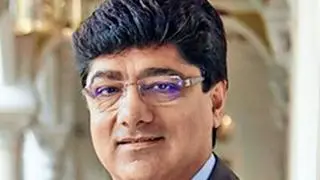Bharti Airtel Direct-to-Home and Media Chief Executive Officer Shashi Arora believes the second phase of digitisation is expected to bring in more gains for the DTH industry.
In an interview with Business Line , he talks about the growth prospects and challenges for the industry.
The DTH industry saw a slowdown in monthly subscribers earlier. Did digitisation help it gain subscriber numbers?
Deferment of the digitisation deadline date did take away some customers from DTH to cable.
But once digitisation happened, the DTH industry saw big gains, especially in Delhi and Mumbai, though gains from Kolkata and Chennai were limited.
In the second phase, a deferment is unlikely and the industry expects more gains, considering there are 38 cities that will need to go digital.
Overall, the industry estimates that 16 million subscribers are up for grabs and roughly 25-30 per cent of these would want to opt for DTH. Overall, the industry’s monthly subscriber additions a month are estimated at 8 lakh to 1 million.
Do you consider the first phase of digitisation a success, given that Kolkata and Chennai have not gone fully digital?
I believe the most important milestone was achieved when the Cable Act Amendment was passed. Now, digitisation is an irreversible process.
The fact is that by the end of 2014 the country needs to be digitised.
As digitisation progresses and more and more cities and States become fully digital, there will be a kind of a snowballing effect.
The absence of television signals will get the fence-sitters to go digital.
Do you think rural areas will continue to drive DTH growth?
Nearly two-third of our new customers are from cable dark or rural areas. Even after the second phase (of digitisation), this will, perhaps, remain the same.
Of course, digital cables will be a more relevant competition. The positive side is that there will be a level playing field for DTH and cable. Also, DTH is available pan-India, and wherever customers have had the freedom of choice, they have opted for DTH due to sales service, convenience and other factors.
The DTH industry has been facing losses. With the Budget round the corner, what measure do you want the Government to take?
The DTH industry is capital-intensive and is facing losses because customers get subsidised boxes, as the players absorb nearly 50 per cent of the cost.
It will take a while for these losses to be wiped off as the industry is still in a nascent stage. As we have been saying in the past, the taxes on this industry are far more than they should be on a nascent industry.
We pay both service and entertainment tax. Also, we pay a high license fee.
Nearly 33 per cent of every Rs 100 earned is paid to the Government, another 30-40 per cent goes in content costs. So, service tax reprieve should be given to the industry.
Also, license fee should be cut down and customs duty on imported set-top boxes should be waived, at least in the digitisation phase.
How do you see high-definition (HD) space growing?
There are still just 15-20 HD channels with a small base of about one million subscribers.
Broadcasters are experimenting with HD. We are stronger players in terms of the HD technology and the range of channels. It will take time for the category to grow.
Have value-added services become significant revenue contributors? Do you see more film-makers using DTH to release movies?
DTH offers an important platform for films, especially small budget or niche films, to garner an audience without spending much on marketing. In the next one or two years, I am sure more film-makers would like to release their movies only on DTH.
Besides pay per view, other interactive services such as gaming, ikidsworld have become important for us.
Our services such as iExam, iMusic and iEnglish are also becoming popular.
Do you see challenges in satellite transponder capacity for the industry?
We have good capacity and have a roadmap for the next 20 years, which needs to be approved by the Indian Space Research Organisation (ISRO).
Most DTH players carry about 300 channels right now, while cable companies have to mandatorily carry 500 channels.
For the DTH industry to carry an additional 200 channels, more capacity needs to be created, otherwise again it will not be a level-playing field with digital cable.
ISRO should guide the industry on how this capacity can be added.








Comments
Comments have to be in English, and in full sentences. They cannot be abusive or personal. Please abide by our community guidelines for posting your comments.
We have migrated to a new commenting platform. If you are already a registered user of TheHindu Businessline and logged in, you may continue to engage with our articles. If you do not have an account please register and login to post comments. Users can access their older comments by logging into their accounts on Vuukle.